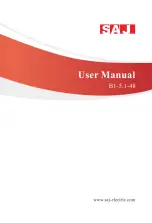
11.1 ETERNUS CS800 Replication Overview
To schedule replication for a share or partition, use the
Configuration >
Scheduler
page (see
"Scheduling a Share or Partition for Replication" on page
). To limit the amount of network bandwidth used for replication, enable a
constant throttle (see
"Enabling System Throttling" on page 257
), or schedule
replication throttling (see
"Scheduling Replication Throttling" on page 266
).
Understanding Data Replication
During data replication, data is sent from one system (the source) to another system,
usually in another location (the target). For example, you might replicate data from a
branch office (the source) to a central office (the target).
Sources
send
replicated data, and targets
receive
replicated data. A target system can
receive data from up to ten sources. A source system can send data to up to two targets.
Finally, one system can act as both a source and a target.
Replication works only with deduplicated data, and data is compressed before it is
replicated. Because of this, the amount of data transmitted between systems during
replication is greatly reduced compared to the original amount of data stored. In
addition, a data block is transmitted only if the target does not already have a copy of the
block. Finally, data can optionally be encrypted before it is transmitted.
The ETERNUS CS800 can perform the following types of replication:
l
l
"Directory/File or Cartridge Based Replication" on page 342
l
"OST Optimized Duplication" on page 343
l
"Multiple Target Replication" on page 343
Replication
Replication occurs when replication is enabled for a deduplicated NAS share or VTL
partition and a replication schedule is configured (or manual replication is performed on
a regular basis). For replication to occur, the source system must be configured to point to
the target system. Similarly, the target system must be configured to accept data from the
source system.
To optimize the replication process, deduplicated data is continuously sent in the
background from the source system to the target system. However, a snapshot that
preserves the file structure of your data is sent to the target system only when a scheduled
or manual replication job occurs. A snapshot contains all of the information that is
necessary to recreate a share or partition just as it was at the point in time when the
snapshot was created.
ETERNUS CS800
341
Содержание ETERNUS CS800 S6
Страница 1: ...English ETERNUS CS800 S6 User Guide V3 2 7 Edition April 2017 ...
Страница 131: ...7 3 The Remote Management Console Figure 98 Remote Management Pages Map ETERNUS CS800 131 ...
Страница 173: ...8 8 AIS Connect Figure 132 AISConnect Wizard Confirm ETERNUS CS800 173 ...
Страница 449: ...16 2 Storage Subsystem Figure 313 Inserting the 3 5 inch HDD module ETERNUS CS800 449 ...
















































